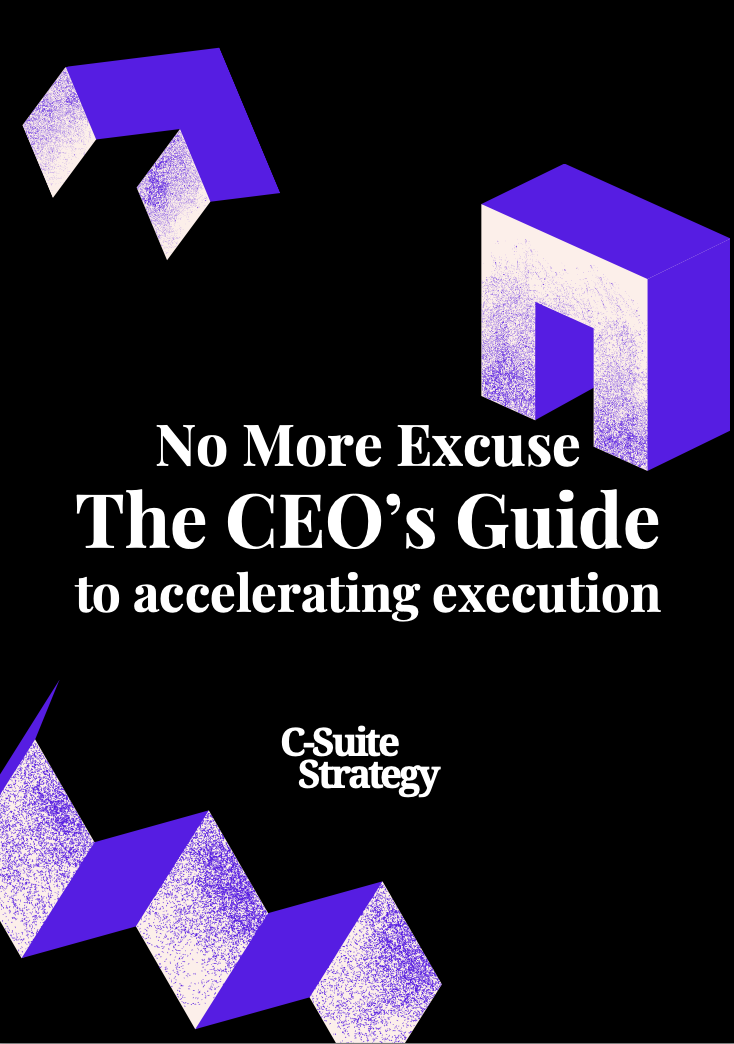
Understanding the Landscape
Getting to Know the Business Landscape
Embarking on a new role as a CEO presents an exhilarating opportunity, particularly during the first days and months. The foundational step to success is understanding the landscape of your organization and industry. Taking the time to immerse yourself in the business environment will help you navigate effectively.
Begin with conducting a thorough analysis of the company's internal and external factors. This includes grasping the current business operations, financial health, and competitive positioning. It is essential to engage with senior partners and executives to extract valuable insights into the company's historical and current strategy.
As you take on the CEO role, exploring the impact of business strategy on leadership can unearth pivotal information that aligns with understanding the broader business perspective. Relating these insights back to organizational strengths and areas needing development will further solidify your understanding.
Set aside time to meet key stakeholders and the executive team. Sessions with leaders from various departments will not only cultivate relationships but will provide diverse perspectives that enrich your comprehension of the company’s dynamics and culture. The insights gained will assist in forming an effective action plan and setting a constructive tone for your first months and beyond.
Remember, the initial focus should be on listening rather than immediate decision-making. Investing effort in comprehending the landscape lays the groundwork for subsequent steps such as building key relationships and setting strategic priorities.
Building Key Relationships
Fostering Key Connections
Navigating the initial days as a new CEO often involves understanding and integrating into existing networks and systems. This is where building meaningful relationships with key stakeholders becomes crucial. Engaging with the executive team early on not only sets the tone for collaborative work but also helps in forming a strong foundation for ceo excellence. In the first days, prioritize spending time with the top team and crucial leaders within the organization. As you embark on these initial interactions, focus on investing time in listening. Understanding their insights will help tailor your strategic action plan effectively. Doing so allows for a well-rounded perspective on the organization's past intricacies and current dynamics. Building these relationships isn't just about immediate tasks. It's about setting a long-term trajectory that aligns with the organization’s goals. Embrace face-to-face meetings, either in-person or virtually, to establish open channels of communication. This approach aids in dispelling any hesitations or uncertainties that might linger during executive transitions. Another key element is engaging with the broader business community. Such interactions provide a platform to position yourself not only as an organizational leader but as a figure of broader industry influence. As you mark your first months in the ceo role, these connections inevitably contribute to strengthening the business network and supporting future collaborations. Your leadership during this time will help mold the organization's culture and instill trust. Even in global companies, connecting on a personal level with each team member promotes an environment where people will feel valued. A relationship-centric approach can magnify employee engagement and drive sustained business performance. For more strategies on building effective relationships and getting started on the right note, consider the strategic guide The First 100 Days for C-Suite Executives: A Strategic Approach to enhance your journey as a newly appointed CEO.Setting Strategic Priorities
Crafting Actionable Priorities for Success
As you navigate your first 100 days in the CEO role, establishing strategic priorities is essential. This step lays the groundwork for your leadership journey and sets the tone for your organization. By focusing on key elements, you can effectively chart the path forward:- Analyze Structural Needs: Use your insights from understanding the landscape and building relationships to determine the organizational structure that best supports your strategic vision. This requires a comprehensive evaluation of your executive team and the alignment of their capabilities with company goals.
- Clearly Define Objectives: Break down your strategic priorities into specific, actionable goals. Ensure these goals are measurable and aligned with both the immediate needs and long-term aspirations of the business. The clarity of your action plan will help mobilize the team towards a common direction.
- Balance Quick Wins with Long-Term Goals: Identifying opportunities for early successes can help you gain momentum and build credibility. However, it's crucial to maintain a balance by also focusing on sustainable long-term objectives that will steer the organization towards enduring success.
- Engage Key Stakeholders: Involve your top team and other key stakeholders in the priority-setting process to ensure buy-in and to leverage diverse perspectives. This inclusive approach fosters a shared commitment and helps in building trust within the organization.
- Adaptability and Flexibility: Be prepared to adapt your strategies as needed. The ability to pivot and adjust your priorities based on emerging challenges and opportunities will enhance your effectiveness as a leader.
Communicating Vision and Values
Crafting and Delivering Your Message
After you have a solid grasp of the business landscape and have started forging crucial connections, it's essential to communicate your vision and values across the organization. This sets the tone for your leadership style and ensures everyone is aligned with your objectives. The first few days as a CEO can be overwhelming, but dedicating time to articulate your vision will pay off in the long run. A clear and compelling message helps galvanize the team, establishing trust and credibility among key stakeholders and employees alike.- Be Authentic: Authenticity is vital when conveying your message. Leaders who are open and genuine tend to build stronger connections. Share your journey, what drives you, and the values you hold dear.
- Clarity and Consistency: Ensure that your communication is clear and consistent. Ambiguous messages can lead to confusion and erode trust. Repeatedly emphasize the core values and goals you wish the organization to focus on.
- Engage and Involve: Encourage feedback and participation from your executive team and employees. Open dialogue fosters a culture of inclusivity and innovation, helping the business adapt and excel.
- Multi-channel Approach: Utilize various communication channels—town halls, emails, one-on-one meetings, and social media, if suitable for your company. Each channel allows you to reach different segments of employees with tailored messages.
Quick Wins and Long-term Goals
Achieving Tangible Results and Building Momentum
In the initial stages of your CEO role, demonstrating progress is crucial, and achieving quick wins can be an effective way to set the tone for your leadership. These wins not only build credibility within the organization but also foster confidence among your team and key stakeholders. To build this momentum, consider these strategies:- Identify Low-hanging Fruit: Focus on improvements that require minimal resources yet have the potential to yield significant impact. This can include streamlining processes or addressing long-standing inefficiencies.
- Leverage Existing Teams: Tap into the strengths of your existing executive team. Analyzing their expertise will help you pinpoint areas where quick achievements are most feasible.
- Align with Strategic Priorities: Quick wins should align with your broader strategic objectives. This alignment ensures these early successes contribute to long-term goals, setting a clear direction for future initiatives.
- Sustainable Results: Establish metrics to monitor the long-term impact of quick wins. This monitoring will help ensure that short-term achievements contribute to enduring success.
- Engage Your People: Rally your employees around these early successes. Their involvement and recognition contribute significantly to maintaining momentum and morale.














